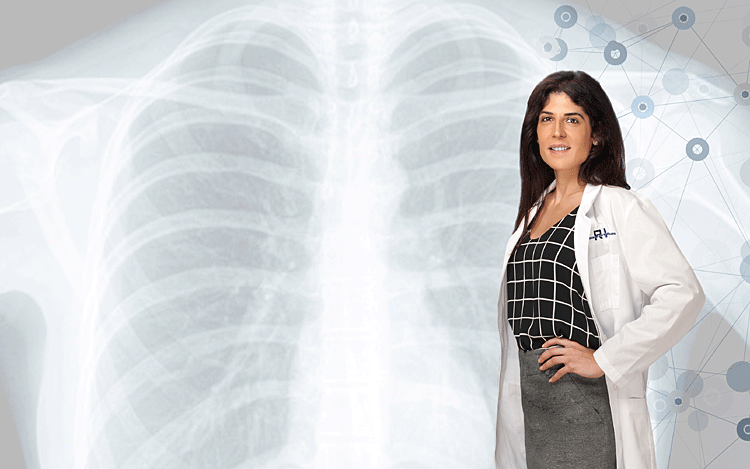DR. REGINA ASON decided to be a doctor because of her father. Dr. Rafael Ason is a cardiologist, and his passion for science and healing was infectious while she was growing up. “My dad influenced me,” she shares. “It was overwhelming; he was such a passionate person — he basically was in love with his job. I wanted to do something like he did.”
Dr. Regina Ason, a Polk County Medical Association member, is a physician at Radiology Imaging Specialists (RIS) in Lakeland. She received her undergraduate degree from The University of Miami in Coral Gables and completed medical school there as well. “I loved the University of Miami,” she says. “It was eight years of my life.”
After she graduated, Dr. Ason decided it was time to move out of state. She did a surgical preliminary year at Rush University Medical Center in Chicago but discovered she didn’t like surgery all that much. Her dad, who she says gives the best advice, agreed. “That year was very important for my decision to be a radiologist,” she states.
Dr. Ason chose radiology because she made an observation while interning: Radiologists always seemed happy. By contrast, surgeons didn’t seem as happy. Quality of life was a big factor in her decision, and radiology offered the balance of helping people while still maintaining a work-life balance. “I think radiology is probably the most fascinating,” she explains. “It gives me the quality of life that I wanted, but at the same time, I’m still getting enough satisfaction with the quality of work, and I find that I do help.”
According to Dr. Ason, radiologists provide insight for other doctors by zeroing in on the problem and providing illuminating results. “It’s fulfilling to help the other physicians — to give people information and help manage the way that they’re caring for patients,” she says.
Once she chose radiology, she applied to a program at Hartford Hospital in Connecticut and completed a residency there. After that, she went to a place that surprised her — Yale University. “I never thought in a million years that I would end up in Yale,” she admits.
She completed a body imaging Fellowship at Yale New Haven Hospital, where she specialized in ultrasound, PET and MRI scans for the abdomen and pelvis. The intensely academic experience was enjoyable, and so was the focus on research.
By this time, Dr. Ason had two children, and she decided to move back to Florida to be closer to family. She found that jobs in diagnostic positions were scarce, so she did another fellowship, this one focusing on cardiac imaging at the Baptist Health System and Baptist Cardiac and Vascular Institute.
The market was still saturated when she finished her second fellowship, so Dr. Ason posted her CV on the American College of Radiology’s website. She received a call from Dr. Martha Lima of RIS. Dr. Lima invited Dr. Ason in for an interview, and Dr. Ason accepted.
Dr. Ason enjoys her job at RIS because it gives her the freedom to do things outside of her specialties. She performs a lot of mammography and women’s imaging. Other imaging modalities offered at RIS include PET/CT scans, multi-slice CT scans, ultrasounds, bone densitometry, nuclear medicine, and X-rays.
Dr. Ason is also working to bring coronary computed tomography angiograms, or CTA studies, to Winter Haven Hospital (WHH). These tests look at the coronary artery and can reveal the amount of plaque buildup in patients. CTA studies show the anatomy really well, according to Dr. Ason, and are more sensitive and specific than stress tests.
In fact, Dr. Ason has already helped a patient with this imaging modality. A technologist at WHH volunteered to receive the test after experiencing shortness of breath and extreme exercise fatigue. This patient had already received a negative stress test, but the cardiac CT showed that she actually had a high-grade stenosis. “We took care of her, and she’s feeling a lot better now,” Dr. Ason says. “That’s just one example of how (CTA studies) could have a huge impact.”
CTA exams will first be used in emergency settings, where they can act as a rule-out test when patients come in with possible heart disease symptoms. From there, Dr. Ason hopes to bring CTA tests to the RIS central office.
Ultimately, Dr. Ason enjoys her job and enjoys helping people. “Satisfaction-wise,” she says, “I’m very fortunate.”
CREDITS
story by KELSEY TRESSLER
photo by PEZZIMENTI
